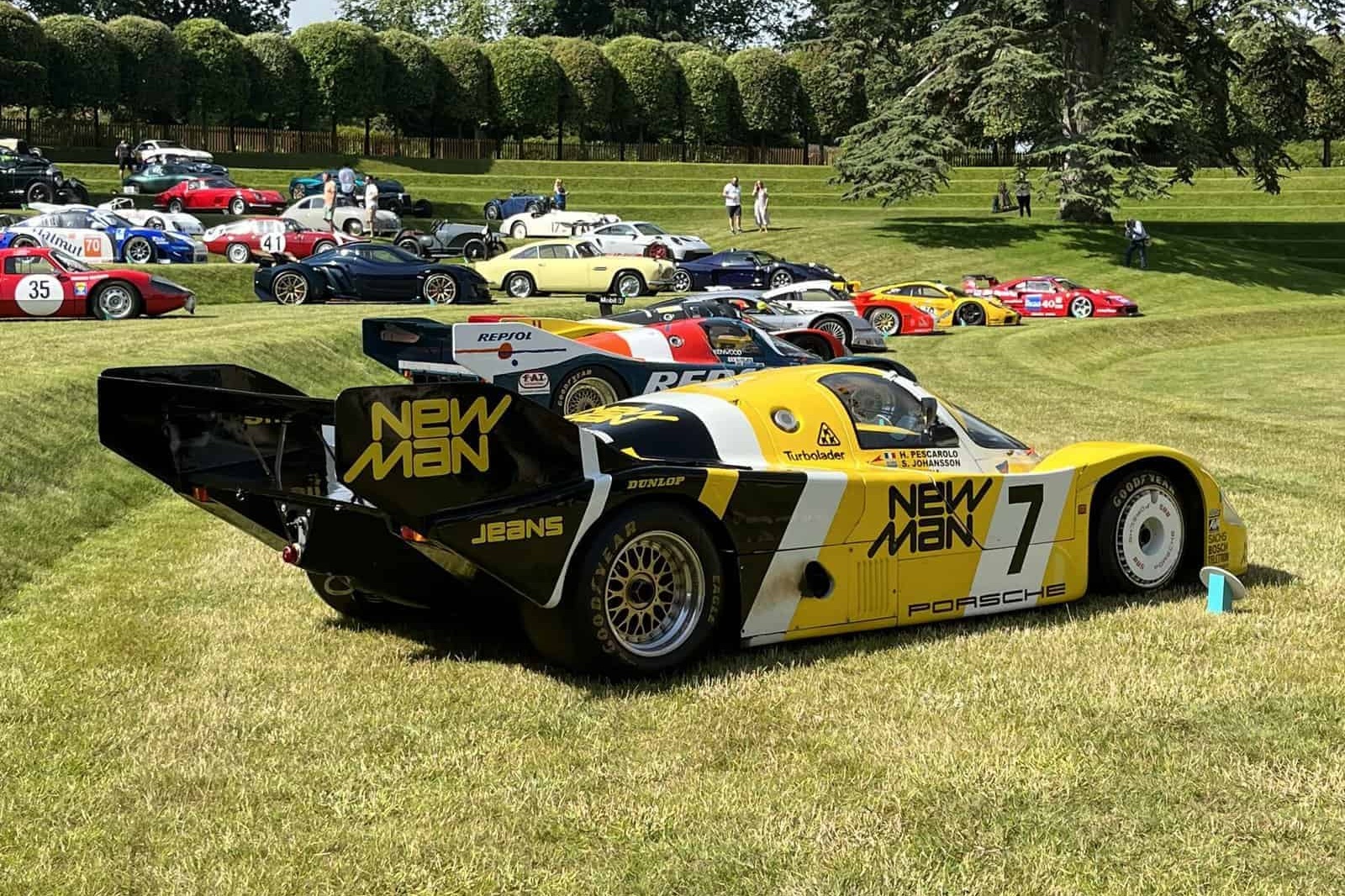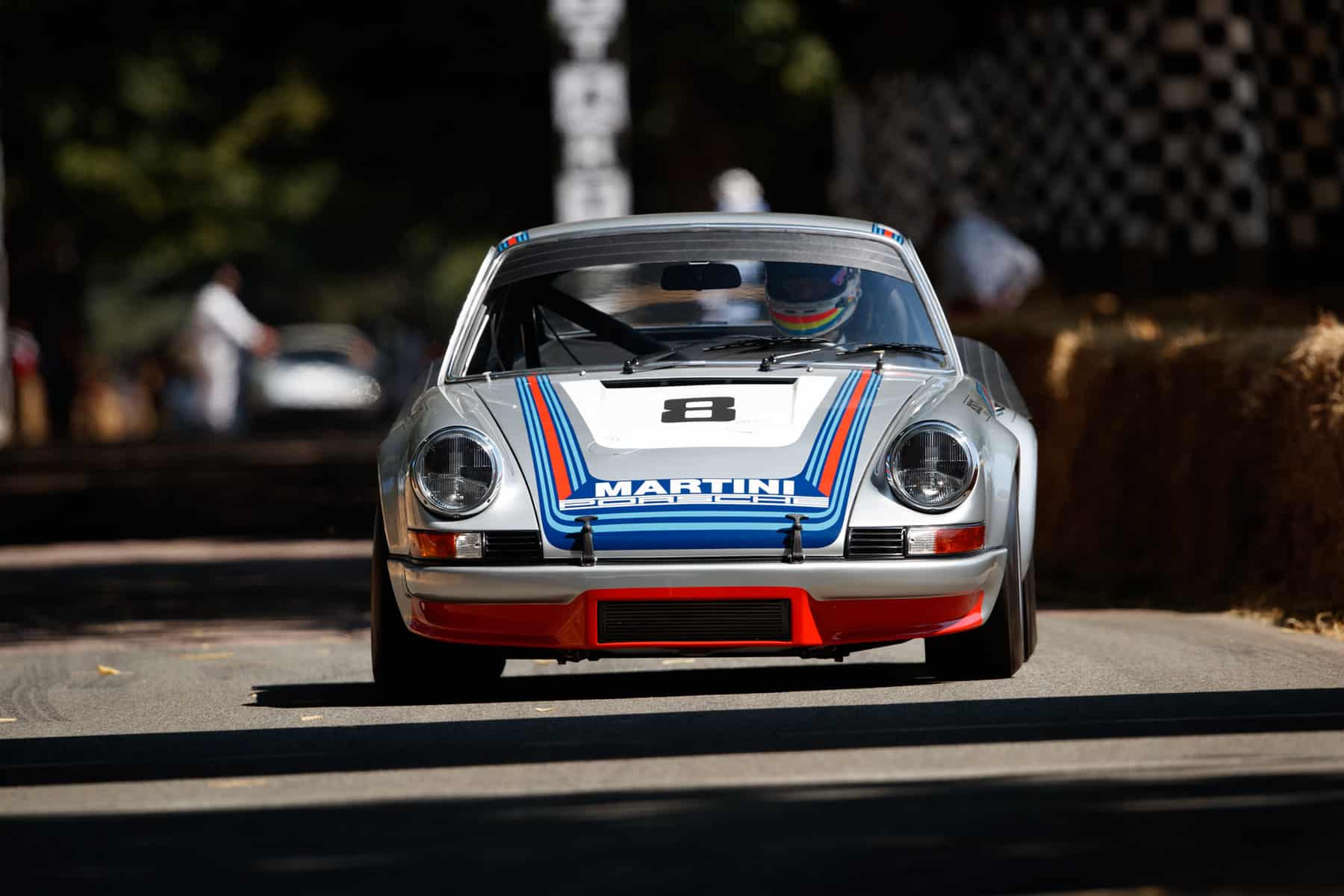Corvair Stories
Gone but by no means forgotten
BY: KARL LUDVIGSEN
The Corvair was Chevrolet’s radical and controversial entry into automobile history. Gone now, the legendary car left behind stories worth telling. Here are a few:
I met Chevrolet engineer Zora Arkus-Duntov at a drinks party at Florida’s Harder Hall before the 12 Hours of Sebring in 1960. His first question to me was straightforward: “Why did you write what you did about the Corvair?”
In the autumn of 1959 my first big project for Sports Cars Illustrated after returning from the Army as the magazine’s editor was to cover Chevrolet’s all-new Corvair. I went out to GM’s Milford Proving Grounds to drive this, the most radical of new American cars since World War 2.
In my extensive report in the November 1959 issue of SCI I said that “the Corvair is fundamentally a profound oversteerer.” This was what Zora wanted to ask me about. How had I reached this conclusion? I explained that I’d taken the car to the Truck Loop where there was a huge turning circle that could be used as a skid pad. Turning laps there I explored the limits of the Corvair’s handling envelope.
The architect of the Corvair’s suspension was Robert Schilling, an experienced chassis engineer from GM’s research staff. I knew that Schilling had introduced an ingenious means of decoupling the two single-leaf springs that carried the de Dion tube at the rear of GM’s turbine-powered Firebird I of 1953. He joined their rear ends by a transverse balance beam that was pivoted to the chassis at its center. Schilling explained his reasoning this way:
“The balance beam was necessary to assure proper car handling in view of the unusual geometry of the car. Because the rear springs are located high inside the body, the rear roll center is almost as high as the center of gravity but the front roll center is low [both exactly as in the Corvair]. If front and rear roll rates were about equal, the rear wheels would then carry too much of the overturning couple under lateral acceleration, causing dangerous oversteer. To avoid this, the front roll-stabilizer bar is provided, nearly doubling the front roll rate, and the rear balance beam is used to reduce the rear roll rate to less than fifty percent of its original value.”
Something exactly like this was what the Corvair desperately needed. Its rear springs, I pointed out in SCI, were twice as stiff as those of a full-size Chevy sedan although they had less load to carry. A system like the one Mercedes-Benz used on its 300SL Roadster, with a coil spring compressed between the swing axles to accept vertical loads and allow the individual wheel springs to be softer, was too cumbersome for the Corvair. But in 1959 Porsche had introduced a simple pivoted transverse leaf spring that performed the same function. “For all its novelty,” I finger-wagged about the lack of such a solution, “the Corvair is surprisingly naïve in this major respect.”
These were pretty tough criticisms of the chassis of a car that soon began to earn a reputation for going out of control without warning. Quick counter-steering to correct tail slides on dry roads wasn’t part of the repertoire of most drivers, and with good reason. To boot, Chevrolet had deliberately given the Corvair relatively slow steering on the grounds that its drivers would thus be less likely to initiate the steering inputs that could cause them to lose control!
Chevrolet was well aware that such rear-suspension decoupling techniques as those used by Porsche, Mercedes-Benz, and Firebird 1 were available. Why didn’t it use them? Chevrolet engineer Charles Rubly explained why in 1960:
“There are swing-axle rear suspensions which permit transferring more of the roll couple to the front end. This particular type [the final Corvair design] was chosen because of:
1. Lower cost.
2. Ease of assembly.
3. Ease of service.
4. Simplicity of design.
5. Ability to use coil springs.
6. Reduction of unsprung weight.
7. Ability to isolate the body from distortion
stresses.”
“Lower cost” was the first of these reasons, the same reason for omitting a front anti-roll bar. This reflected the fact that Chevrolet had conceived the Corvair as a unique new model that would establish its own segment as a lower-cost addition to the Chevrolet range. Low cost was important, of course, but not crucial.
This changed after both Ford and Chrysler quickly caught up with conventional rivals, creating the new “compact” category. Chevrolet then had to respond to the lower price levels of which the ultra-simple Falcon was capable. This took its toll on both the chassis and the interior of the Corvair.
Late in 1961 I left magazine editing to go to work for General Motors in public relations. As news of the Corvair’s cranky road behavior began to flow in, especially to the corporation’s legal staff, an awareness gradually grew that someone now working for GM was among those journalists who had been critical of the car’s design. I recall being interviewed by someone from GM’s legal department who advised me to keep a low profile.
Fortunately I wasn’t among those quoted in the first chapter of Ralph Nader’s Unsafe at Any Speed, dedicated as it was to the Corvair. One of my senior public-relations colleagues did his best to alert top GM management to the threat that Nader’s book and actions represented, counseling a more proactive approach, but his initiative was shrugged off.
For the 1964 model, Chevrolet finally fitted the front anti-roll bar that had been optional and provided a Porsche-like transverse-leaf spring at the rear that allowed the coil-spring rates to be reduced. It is a matter of history that it took far too long to make these essential improvements. The 1965 model introduced a much more sophisticated rear suspension on the lines of the Corvette Stingray’s. From there through 1969 the Corvair’s handling and safety were unimpeachable.
Meanwhile GM geared up to fight the legal challenges to the early Corvair. The former industrial-design offices of Ford & Earl Associates —across the street from the GM Technical Center—were converted into a factory for the Corvair’s defense with shelf-lined rooms full of films and documents.
Out at GM’s home base in Milford, Michigan, a huge area was paved to create “Black Lake,” a vast, smooth surface on which handling experiments could be conducted without limits. Black Lake became an outstanding research tool that later contributed to the racing expertise of the Penske and Chaparral teams. This at least was a positive outcome from what can only be described as the Tragedy of the Corvair.
The engineer in charge of technical aspects of the Corvair’s defense was Frank Winchell, a great choice as an imaginative engineer with a no-nonsense demeanor. Frank’s next assignment was as head of Chevrolet Research and Development, which he turned into a bona fide “skunk works” with the ability to design, build, and test anything that he and his engineering cadre thought worth exploring. For Frank Winchell the Corvair, with its all-independent suspension, flat air-cooled engine, and four-speed or automatic transaxle, was a box of toys capable of any and every permutation.
In the early 1960s it was common knowledge in the industry that Ford was planning a new “world car,” code-named Cardinal, a front-drive, V-4-powered small car that it would produce in both Germany and the USA. As indicated by the use of Saabs as test mules, the Cardinal would be significantly smaller than the compacts that had then recently been launched. I was kept up to date by my neighbor, who worked for the company that made its universal joints.
Frank and his crew got busy building concept prototypes of the car that Chevrolet would field as a rival to the Cardinal. Their offering was a front-drive small car with an air-cooled, flat-four engine ahead of its front wheels, using Corvair engine components. Its independent suspension was sprung by simple, neat, and patented curled-end torsion bars. The prototypes I saw used the Renault Floride/Caravelle body shell.
Ford chose to build its Cardinal only in Germany as the Ford Taunus 12M, so Chevrolet decided it had no need of their concept. That was regrettable. It would have anticipated the similarly conceived Citroën GS, an exemplary car, and could have been developed into a better small car than—dare I mention it—the Vega.
Having plunged into these front-drive experiments, Winchell and company began to consider a world in which everything Chevrolet produced could be powered by engines built up from Corvair cylinder modules. For a big car like the Impala a big engine was needed—a flat-10-cylinder unit based on Corvair parts. It was mounted forward of the front wheels, requiring a not-excessive extension of the car’s front overhang. It drove through an automatic transaxle mounted behind the front wheels.
Climbing into this Impala, I noticed first that the front floor was flat, apart from a bulge in the toeboard to accommodate the transmission. Fired up, the engine had a distinctive but not intrusive rumble. Power-steered of course, the FWD Impala felt heavy on its front tires and responded even less quickly to the steering than its RWD cousin. You could sense the mass out front but not so much so that it made the car unwieldy. In fact by the standards of the day it was acceptable, especially considering that it was a “breadboard” prototype.
My trial of the flat-10 Impala was on the access roads inside the Tech Center. I knew those roads pretty well. I don’t mean the Check Road, the mile-long straight next to the railroad tracks with the loop turns at each end that was used for official running tests. I mean the internal roads that people used to get from Point A to Point B inside the big Warren, Michigan, facility.
To me these roads were as challenging as any section of the Nürburgring. Each had its own characteristics: the ess-bend past the gas-turbine building, the loop fronting the Harrison Environmental Wind Tunnel, and the fast bend around the back of the Styling parking lot—one of my favorites.
On a sunny day I was belting along these roads in a dart-shaped silver coupe no higher than a person’s belt buckle. The Tech Center greenery glowed around me. No pillars blocked my view of the road rolling under the car’s sharp nose. It was warm under the canopy and the motor behind me rumbled happily. I cranked the wood-rimmed wheel to the right and the tires chirped as we slid around the long, open bend past the end of the Engineering building—and braked hard to obey the stop sign before the main road.
Myron Scott, veteran Chevy P.R. man, goggled from the passenger seat. “So that’s sports-carring!” he sputtered. Scotty had discovered what a sports car can do in the unique Corvair Monza GT—and he was as sure as a man can be that he knew all he cared to on the subject.
The Monza GT was a super car to drive. It had a thoroughbred chassis designed and built along racing-car lines. Its mid-placed engine gave it excellent balance. The rearward slope of its seats was radical for 1962, the year of its birth. Leaning back with my head just under the plastic roof, gripping the wheel sloped up at an odd angle from its column, I knew I was driving one of the most advanced cars of its time. And its looks—well, its looks have never been surpassed.
When I joined GM’s public-relations staff at the end of 1961, I was assigned to the “Styling beat.” It was my job to help the stylists tell their story. When Bill Mitchell gave me the run of the building during my first month on the job, I found a lot of work being done on radical rear-engined sports coupes. This was the beginning of the rear-engined era in Grand Prix racing and GM’s stylists were inspired by that excitement.
Chevrolet gave them something to work on. Frank Winchell’s R&D group responded eagerly when Bill Mitchell suggested that they create a chassis that was more racing car than road car. Bill wanted it to go under a body design that was being created in his secret basement studio, under studio chief Ed Wayne, by the Katzenjammer Kids of Styling, Larry Shinoda and Tony Lapine.
The Chevy R&D engineer involved with the chassis of the XP-777, as it was designated, was Jim Musser. Jim warmed up on these Corvair chassis for the design work he was later to do behind the scenes on the racing Chaparrals. He came up with a monocoque steel chassis, twin-wishbone suspension with torsion bars at all four wheels and a mid-placed engine for the coupe. He built another chassis for his own tests with the engine at the rear in the normal Corvair manner. A rough-looking test car, this was irreverently dubbed the “Musserati.”
For me as a public relations man, the unveiling of the XP-777 was a nightmare. Public relations people like things to be orderly and programmed in advance. This was never likely with a Bill Mitchell/Frank Winchell project. Probably they had built the car unofficially with rounding errors of other budgets. So the first appearance of the Monza GT coupe was with no fanfare at all at the 1962 Elkhart Lake June Sprints. It was driven around the track between races by Ken Eschebach, the genial, sandy-haired mechanic whose task it was to keep Mitchell’s cars running right.
In the autumn we took the Monza GT to the Grand Prix at Watkins Glen. There we couldn’t take it around the track because Ford with its “Total Performance” promotion bought those rights for its new rear-engined Mustang roadster—whose debut we helped to spoil by showing off the far more striking Monza GT in the infield. It was my pleasure to explain the car to John Cooper and his team driver, Bruce McLaren. Its clever features fascinated them.
Styling Staff took over the “Musserati” chassis and put a roadster body on it patterned exactly after the lines of the coupe. This became the Monza SS. It had a nicer instrument panel and a feature called “theater seats”: lower-seat sections that were spring-loaded so they rose up to make it a little easier to settle into this very low car.
These Corvairs were officially revealed for the first time at the International Automobile Show in New York at Eastertime in 1963. At last I had a chance to promote these wonderful cars. Walt Farynk and Ed Sperko of GM Photographic reached into their bags of tricks to make dramatic color photos of the coupe that simulated the flame patterns of a re-entry from space.
Using these and other photos, Chevrolet’s Myron Scott put together a brochure on the Monza GT for distribution at the New York Show. This gave me my moment in the Corvair sun. Among the pictures Scotty picked was one showing me peering into the rear engine bay. It’s great to be a visible part of Corvair history.
Chevrolet did consider producing a version of the Monza GT/SS. Such a car was styled and specified as the XP-782 in both coupe and convertible versions with 1966 production in mind. As we know, however, it didn’t happen. Instead, the two special Monzas are still displayed to remind us of the sportiest Corvairs that gave unequivocal proof that if Chevrolet ever did want to produce a fine small sports car, its designers were more than ready to oblige.
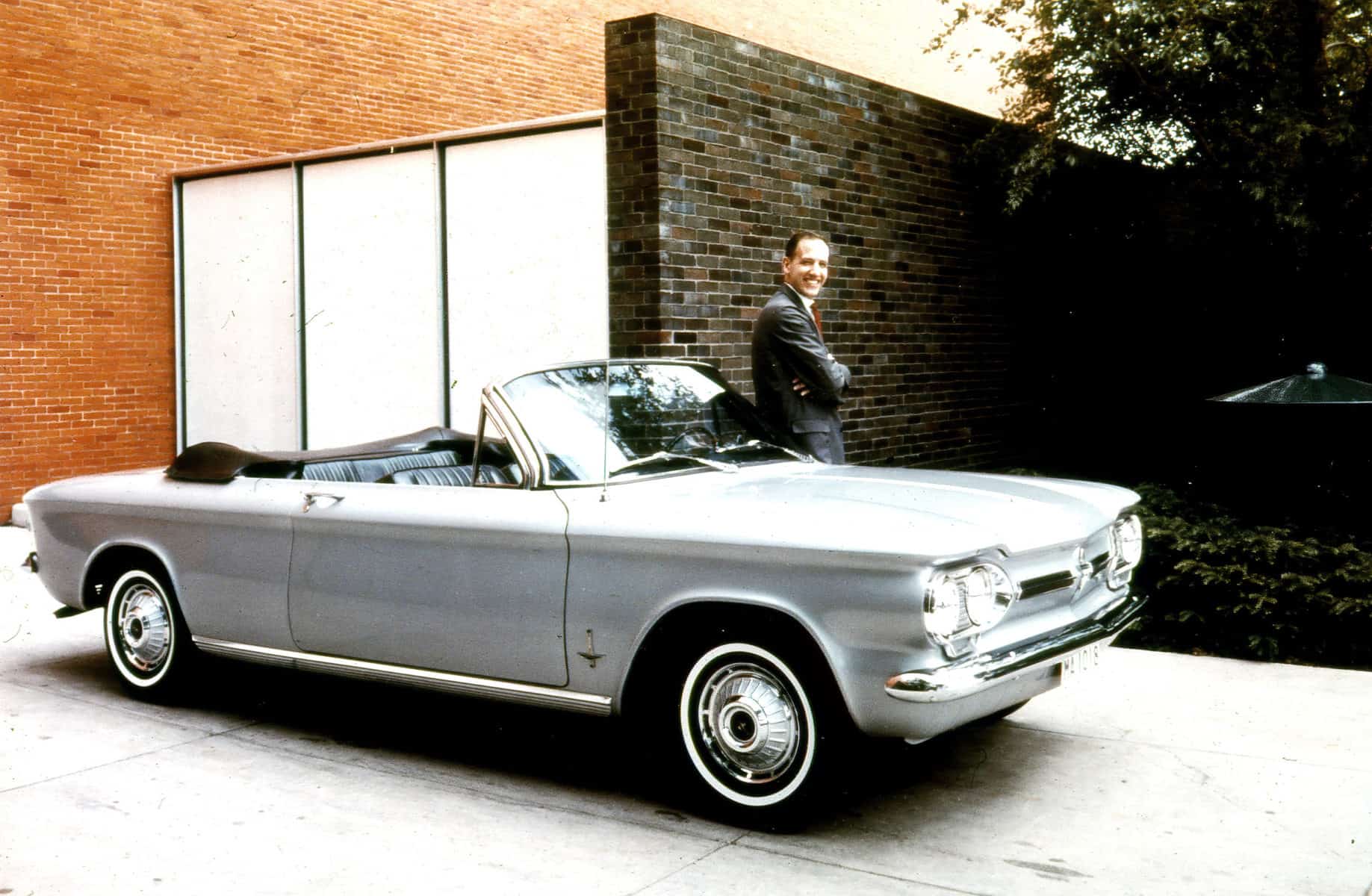


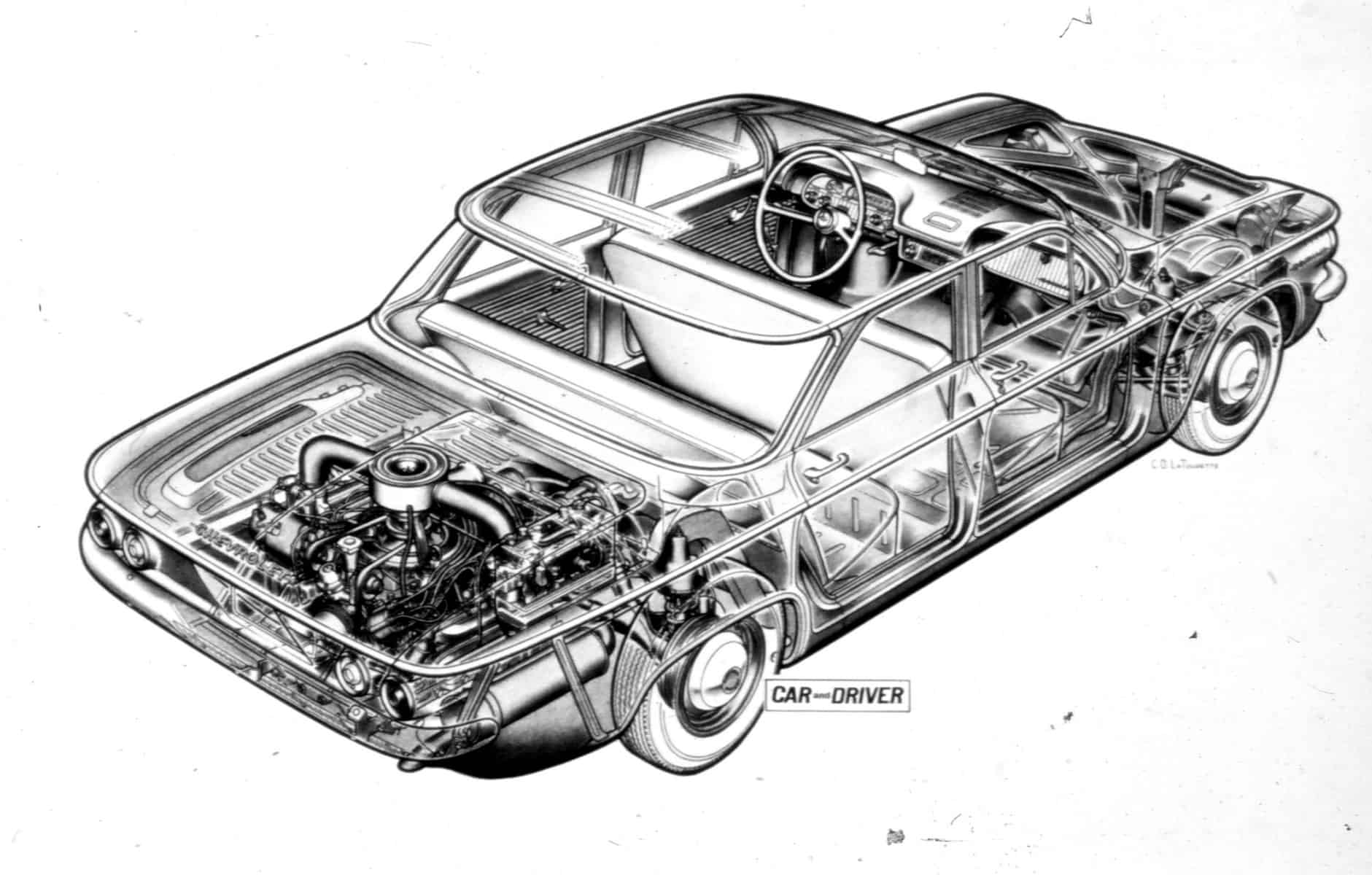
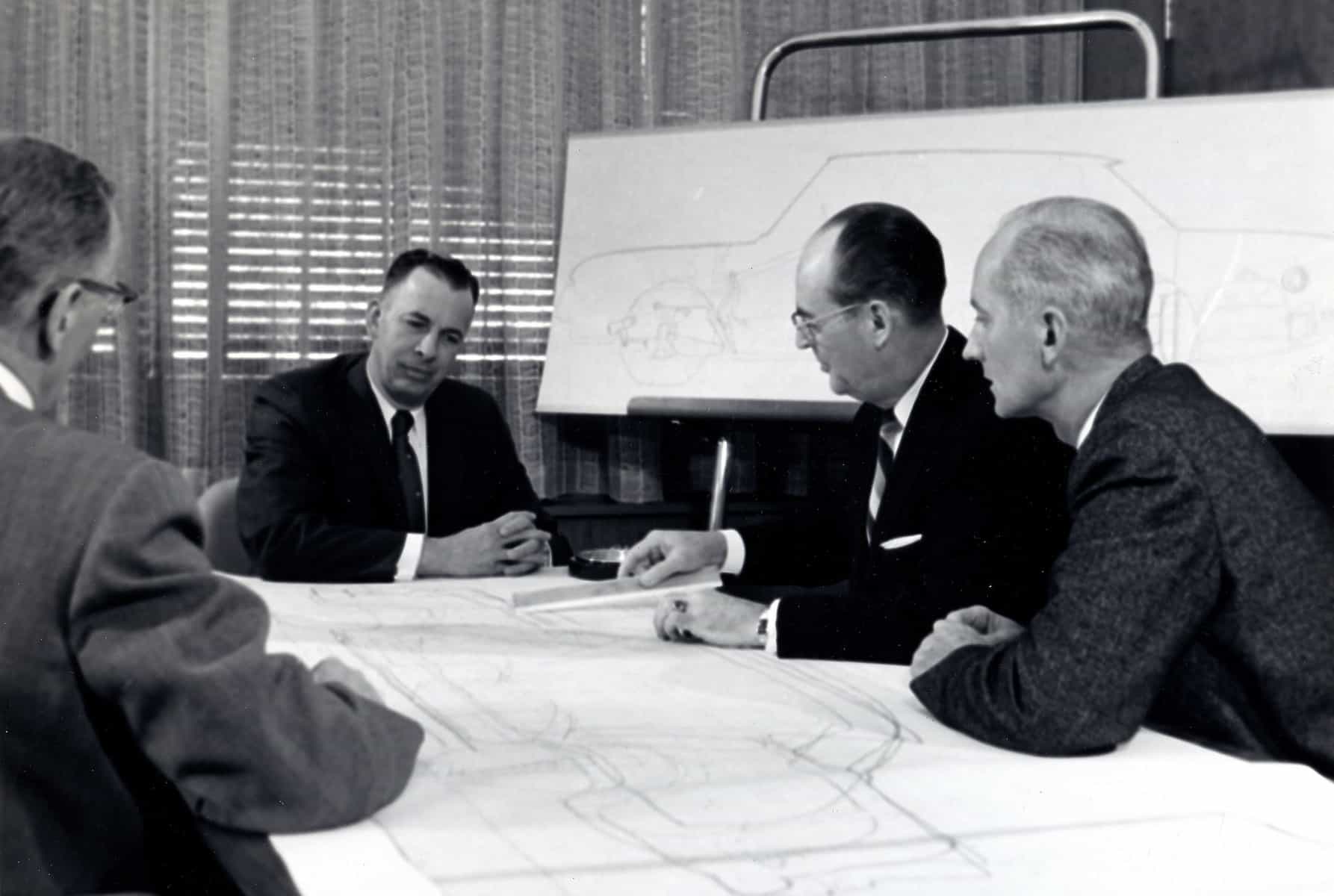
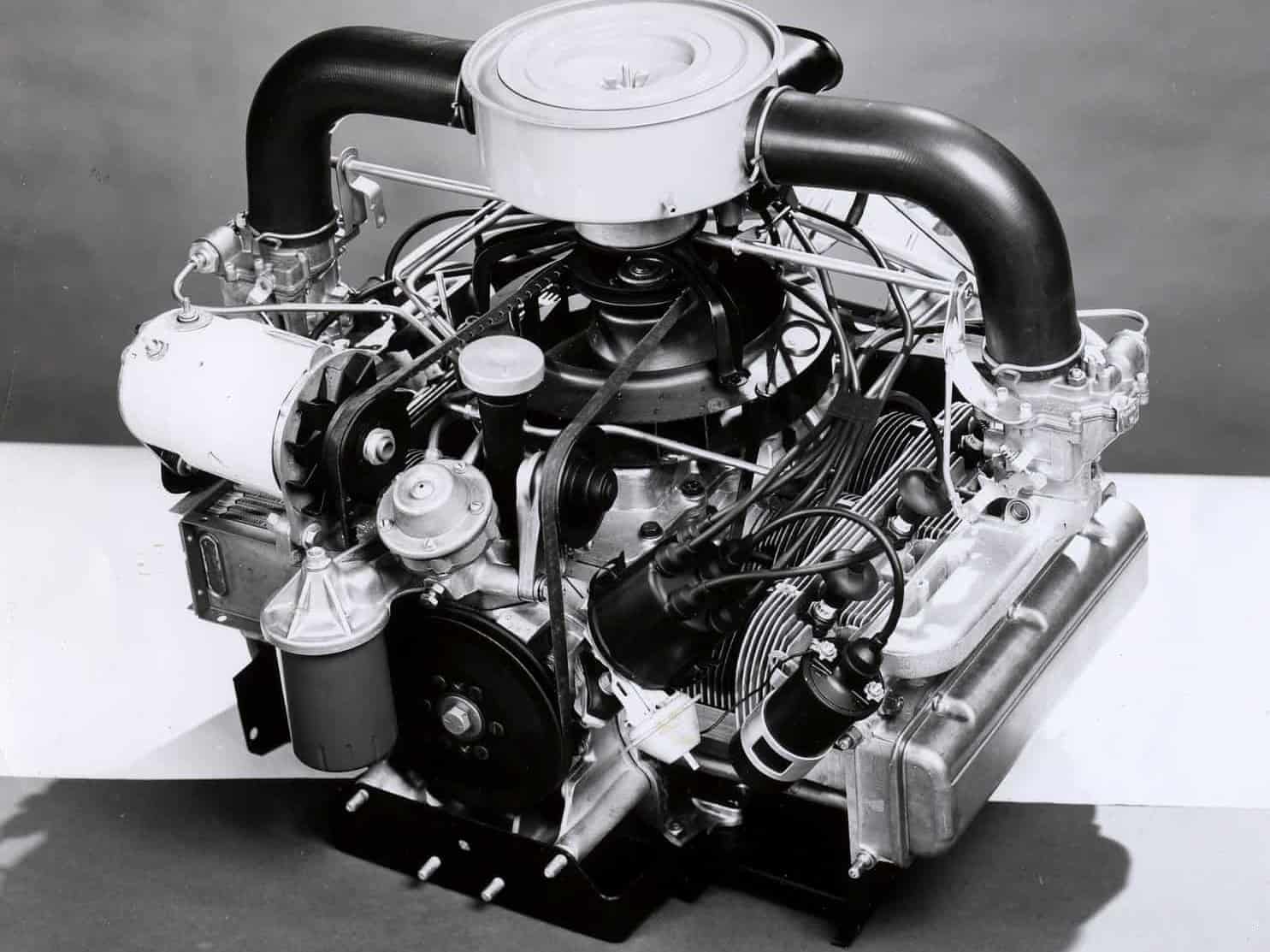
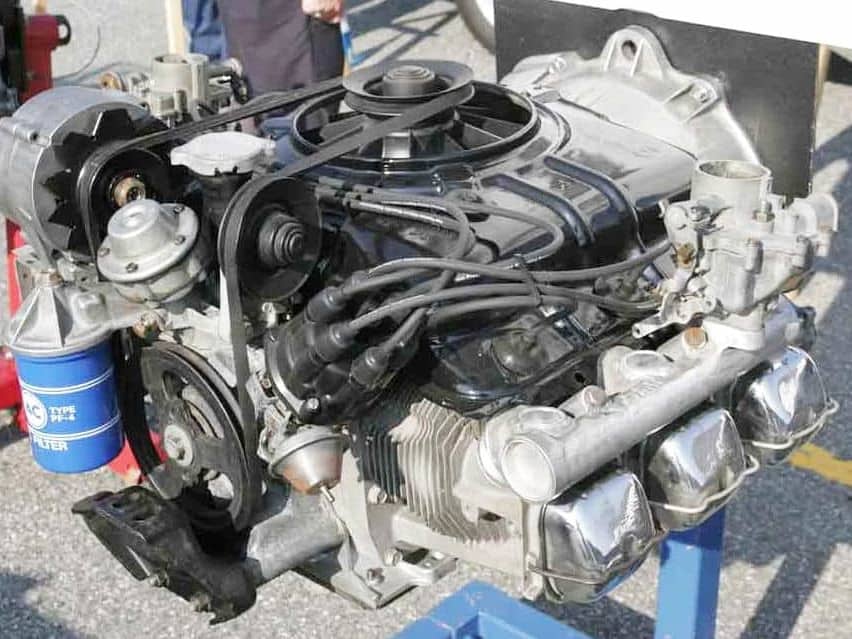


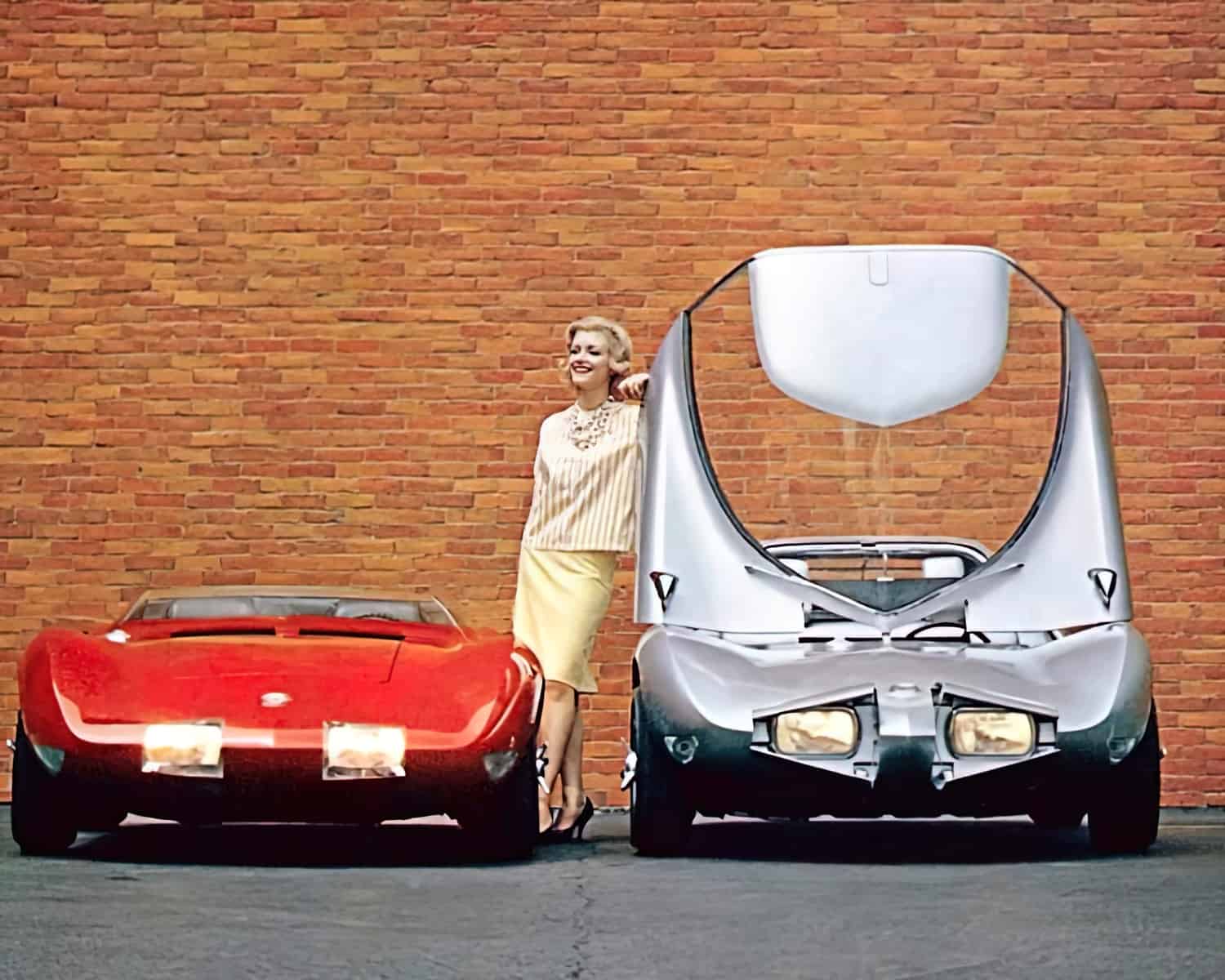
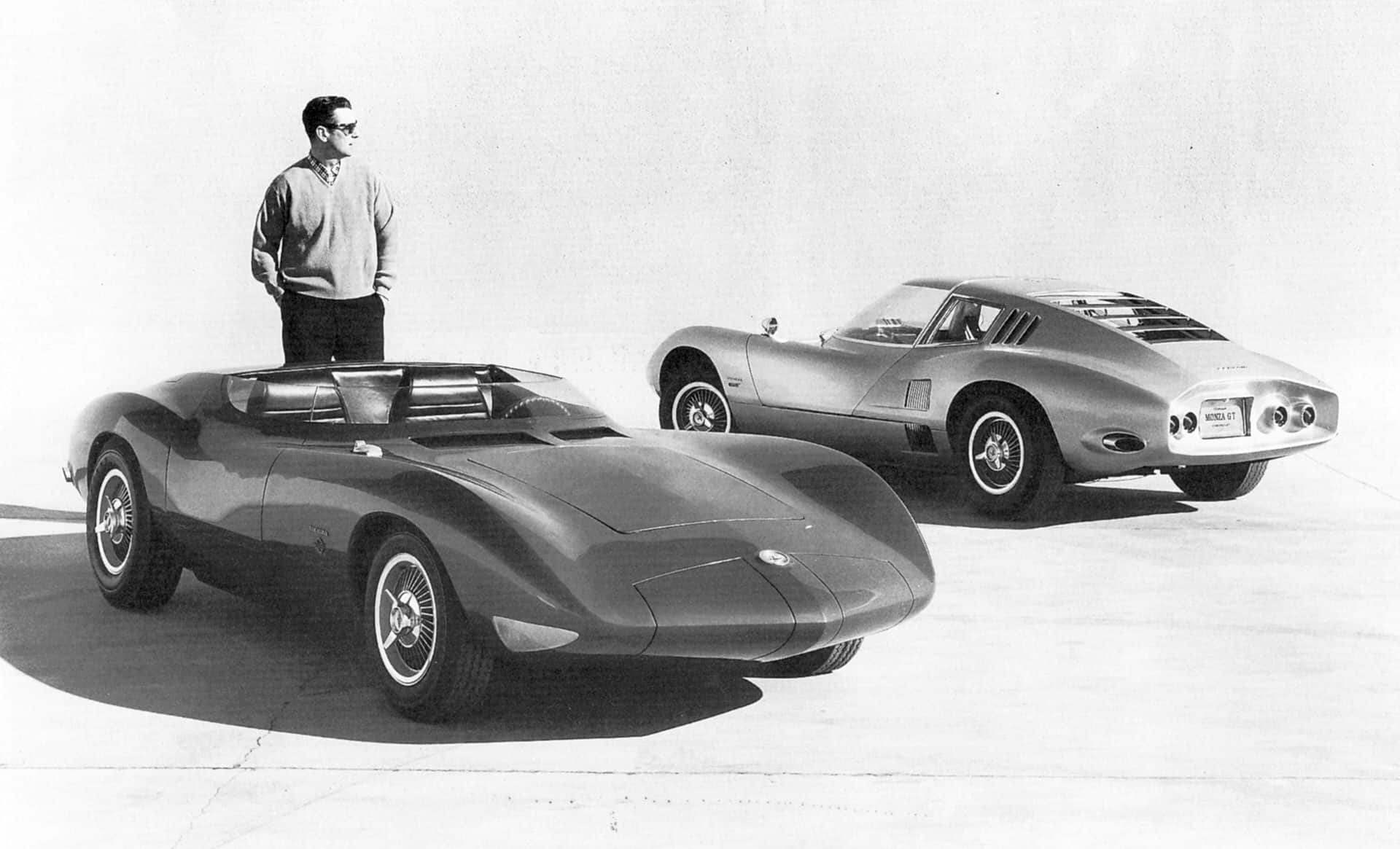

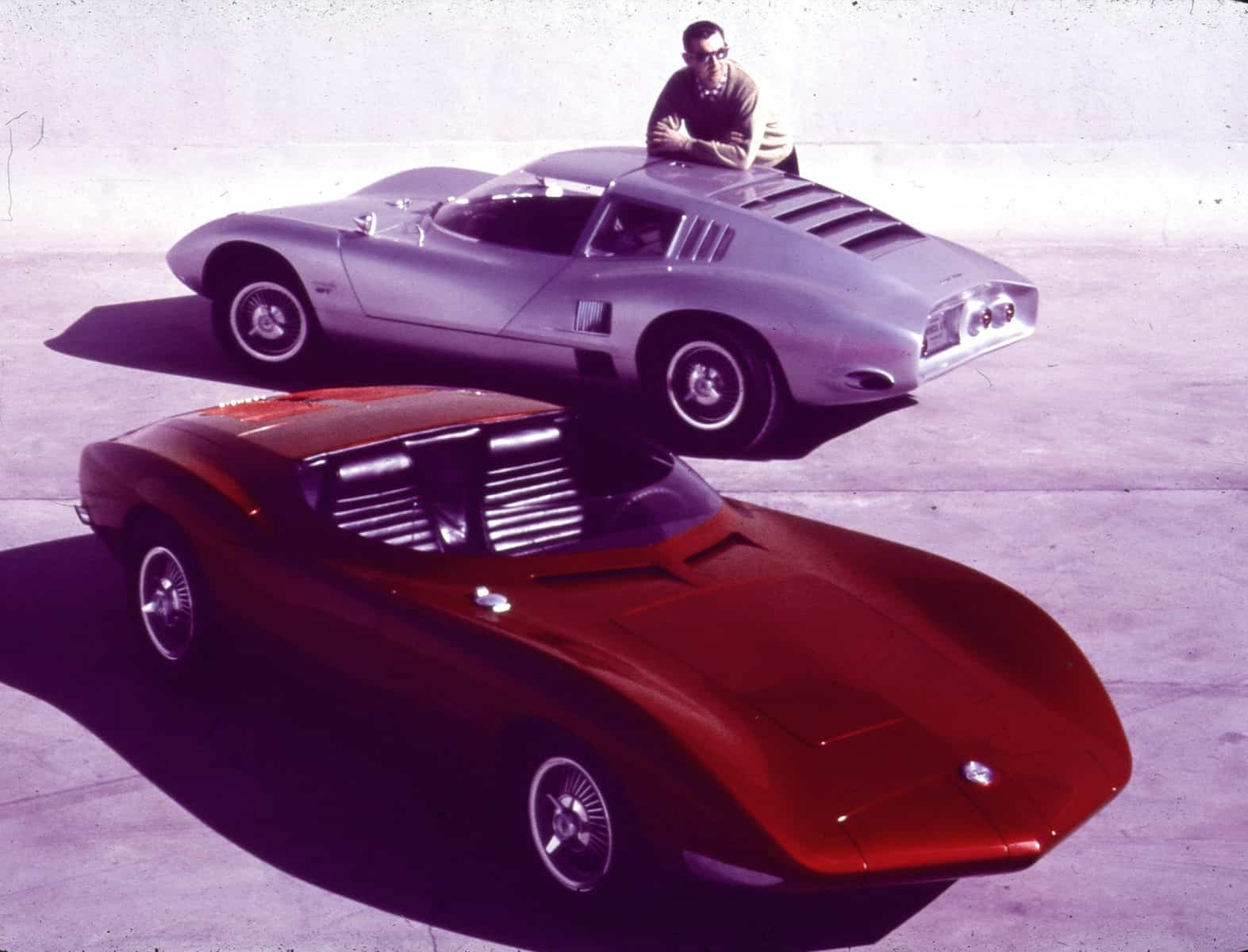


![alfa gtz perfectly imperfect webannerl[1]](https://automedia.revsinstitute.org/wp-content/uploads/2024/08/Alfa-GTZ-Perfectly-Imperfect-webannerl1-uai-1200x800.jpg)
